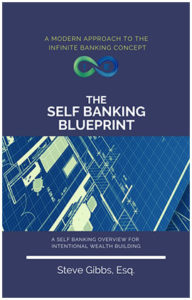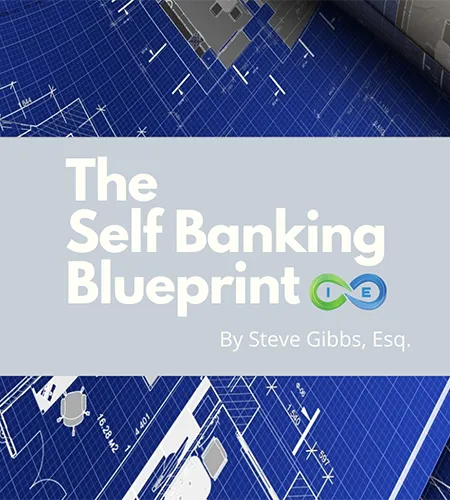Asset-Based Long-Term Care Insurance is an innovative financial strategy that provides coverage for long-term care expenses without the risk of “wasting” premiums if you never need care. With the global long-term care market valued at $1.2 trillion in 2024 and projected to grow at 6.2% annually through 2034, understanding your options has never been more important.
This comprehensive guide explores how you can leverage existing assets—typically a cash value life insurance policy or annuity—to secure long-term care protection while maintaining financial flexibility and legacy planning.
Hybrid Long Term Care Insurance
Pairing Long Term Care Insurance with Life Insurance and Annuities
Table of Contents
- Key Takeaways
- The Long-Term Care Problem
- 2025 Market Trends
- Traditional vs. Asset-Based Long-Term Care
- How Asset-Based Long-Term Care Plans Work
- Types of Asset-Based LTC Solutions
- Top Asset-Based Long-Term Care Companies in 2025
- Tax Advantages of Asset-Based LTC
- Policy Options and Features
- Reimbursement vs. Cash Indemnity
- Life Insurance vs. Annuity LTC: Feature Comparison
- Asset-Based Long-Term Care Pros and Cons
- Asset-Based Long-Term Care FAQs
- Future of Asset-Based LTC: Outlook for 2025 and Beyond
- Conclusion
Key Takeaways
- Asset-Based Approach: Asset-based long-term care insurance uses the value of an existing asset, such as a cash value life insurance policy or an annuity, to cover long-term care expenses. This approach ensures that if you don’t need long-term care, the value of the asset is not wasted and can still benefit your designated beneficiaries.
- Market Growth: Nearly 70% of adults aged 65+ will require long-term care during their lifetime, with 20% needing care for over five years, driving substantial growth in the asset-based LTC market.
- Tax Advantages: Under the Pension Protection Act of 2006, distributions from asset-based LTC policies for qualified care expenses are generally tax-free, providing significant financial benefits.
- Flexible Solutions: Asset-based LTC offers multiple funding options, including life insurance-based solutions with death benefits and annuity-based approaches with guaranteed income streams.
- Financial Protection: These policies help shield retirement savings from the potentially devastating costs of long-term care, which can exceed $100,000 annually for nursing home care in 2025.
The Long-Term Care Problem
Long-term care services have become increasingly expensive, creating a significant financial risk for retirees. In 2025, private nursing homes average around $105,000 per year, while home-based care costs approximately $55,000 annually. These expenses can rapidly deplete a retiree’s entire savings, leaving Medicaid as the only option and no wealth to pass on to loved ones.
The statistics paint a concerning picture:
- Nearly 70% of adults aged 65+ will require some form of long-term care during their lifetime
- 20% of seniors will need care for more than five years
- The average duration of long-term care needs is approximately 3.7 years
- Women typically need care longer (3.9 years) than men (2.2 years)
With Americans living longer than ever before, preparing for potential long-term care expenses has become a priority in comprehensive retirement planning.
2025 Market Trends in Asset-Based Long-Term Care
The asset-based long-term care market is experiencing significant growth due to several key trends:
- Baby Boomer Wealth Transfer: Baby boomers hold approximately $100 trillion in wealth, driving demand for protected financial products like asset-based LTC that preserve assets for future generations.
- Hybrid Policy Popularity: Policies combining life insurance or annuities with LTC benefits have surpassed traditional LTC insurance in sales, growing by 18% in 2024 alone.
- Structured Annuity Growth: Structured annuities saw record sales growth of 37% in 2024, indicating strong interest in flexible financial solutions for retirement planning.
- Customized Coverage Options: Companies are increasingly offering tailored solutions with various payment structures and benefit periods to meet diverse client needs.
These trends reflect a fundamental shift in how Americans are approaching long-term care planning, with more emphasis on products that provide multiple benefits rather than single-purpose solutions.
Traditional vs. Asset-Based Long-Term Care
Historically, the primary way to prepare for potential long-term care costs was through traditional long-term care insurance (“LTCI”). This straightforward insurance policy requires regular premium payments in exchange for coverage of some or all long-term care costs if needed.
However, traditional LTCI comes with significant drawbacks:
- Premiums can increase substantially over time
- If care is never needed, premiums are effectively “lost”
- Underwriting can be restrictive, especially for older adults
- Many insurance companies have exited the traditional LTCI market
In response to these challenges, insurers developed asset-based long-term care insurance, which addresses these concerns while providing similar protection. The key differences include:
| Feature | Traditional LTC Insurance | Asset-Based LTC |
|---|---|---|
| Premium Stability | Premiums may increase | Guaranteed level premiums |
| Return of Premium | No return if unused | Death benefit/cash value if unused |
| Underwriting | Strict health requirements | Often more lenient |
| Payment Options | Ongoing premiums | Single-pay or limited-pay options |
| Cash Value | No cash value | Accumulates cash value |
| Tax Treatment | Benefits generally tax-free | Benefits and death benefit generally tax-free |
This shift toward asset-based solutions reflects consumers’ desire for products that provide value regardless of whether long-term care is needed.
How Asset-Based Long-Term Care Plans Work
Asset-based long-term care insurance plans function similarly to regular cash value life insurance policies or annuities but with the added benefit of long-term care coverage. After applying for coverage and going through underwriting, you make premium payments to the insurer.
Funding Options
You can fund an asset-based LTC policy through several methods:
- Single Premium: A one-time lump-sum payment that establishes the policy.
- Limited-Pay Options: Premiums spread over a defined period, typically 5, 10, or 20 years.
- 1035 Exchange: Tax-free conversion of an existing life insurance policy or annuity into an asset-based LTC policy.
- Qualified Funds: Using funds from IRAs or 401(k)s (note that this creates a taxable event).
How Benefits Are Triggered
Long-term care benefits typically trigger when the insured becomes unable to perform at least two of the six Activities of Daily Living (ADLs) or develops severe cognitive impairment, as certified by a healthcare provider. The six ADLs are:
- Bathing
- Dressing
- Toileting
- Transferring (moving to/from bed or chair)
- Continence
- Feeding
Most policies have a waiting period (typically 30-90 days) before benefits begin. Once triggered, benefits can be paid in various ways depending on the policy structure.
If Care Is Needed
When qualifying for benefits, the policy provides funds for long-term care expenses, typically with a monthly benefit cap. These funds can cover care in various settings:
- Nursing homes
- Assisted living facilities
- Adult day care
- Home health care
- Care coordination services
If Care Is Never Needed
If long-term care is never required, the policy provides other benefits:
- With a life insurance-based policy, a death benefit is paid to beneficiaries.
- With an annuity-based policy, you can access the accumulated value through withdrawals or annuitization.
- Many policies offer surrender options, allowing you to reclaim your investment if you change your mind.
This “use it or don’t lose it” approach is a key advantage over traditional long-term care insurance.
Types of Asset-Based LTC Solutions
Asset-based long-term care insurance typically falls into two main categories: life insurance-based and annuity-based. Each offers distinct advantages depending on your financial situation and goals.
Asset-Based LTC with Whole Life Insurance
Life insurance-based LTC solutions leverage a life insurance policy to provide long-term care coverage. These policies come in two main forms:
- Acceleration of Death Benefit: These policies allow you to access a portion of the death benefit early if you need long-term care. The amount used for care reduces the death benefit proportionally.
- Extension of Benefits: This feature provides additional long-term care coverage beyond the death benefit, effectively extending the total pool of money available for care.
Life insurance-based solutions typically offer more robust coverage and flexibility, but require more comprehensive underwriting.
How It Works
When you purchase a life insurance policy with LTC benefits:
- You choose a death benefit amount (e.g., $300,000)
- This creates a pool of money available for either long-term care or as a death benefit
- Benefits are typically capped at a monthly percentage (e.g., 2% of the death benefit)
- Some policies offer an extension rider that provides benefits beyond the death benefit
- If long-term care is never needed, your beneficiaries receive the full death benefit
This approach appeals to those who want guaranteed life insurance coverage while also preparing for potential long-term care needs.
Asset-Based LTC with an Annuity
Annuity-based LTC solutions use deferred annuities as the funding vehicle. These products are particularly appealing for individuals who:
- May not qualify for life insurance due to health issues
- Already have sufficient life insurance coverage
- Have existing annuities that could be converted via 1035 exchange
- Prefer guaranteed income with LTC benefits
How It Works
Annuity-based LTC typically functions in one of two ways:
- LTC Benefit Rider: An annuity with an added LTC benefit rider that increases the payout if long-term care is needed.
- Enhanced Payout Annuity: An annuity that increases its regular payments (often doubling or tripling) when long-term care is needed.
The annuity grows tax-deferred during the accumulation phase. If long-term care is never needed, you can either annuitize the contract for regular income or leave the value to beneficiaries.
Annuity-based solutions typically have less stringent underwriting requirements than life insurance-based options, making them accessible to more people.
Top Asset-Based Long-Term Care Companies in 2025
The asset-based LTC market has evolved significantly, with several companies emerging as leaders in this space. Here are the top providers for 2025, categorized by their primary offerings:
Life Insurance-Based LTC Providers
- OneAmerica Financial: Asset Care®
- Whole life insurance with integrated LTC benefits
- Guaranteed cash value growth
- Joint coverage options for couples
- Lifetime continuation of benefits option
- A+ Superior rating from A.M. Best
- Securian Financial: SecureCare
- Universal life insurance with LTC benefits
- Cash indemnity benefits with no receipts required
- Guaranteed premiums and benefits
- Return of premium options
- Nationwide: CareMatters II
- Linked-benefit universal life insurance
- Flexible premium payment options
- International benefits available
- Cash indemnity design
- Lincoln Financial: MoneyGuard
- Universal life with LTC riders
- High customization options
- Tax-free benefits for qualified expenses
- Inflation protection options
- Pacific Life: PremierCare
- Flexible premium payment structures
- Comprehensive coverage options
- Strong financial ratings
Annuity-Based LTC Providers
- Mutual of Omaha: Living Care Annuity
- Deferred annuity with LTC benefits
- Predictable payout structure
- Less stringent underwriting
- A+ Superior financial strength rating
- State Life (OneAmerica): Annuity Care®
- Provides lifetime LTC benefits
- Guaranteed cash value growth
- Simplified issue with no medical exam in some cases
- Genworth Financial: Total Living Coverage
- Deferred annuities with competitive rates
- Flexible payout structures
- Experienced LTC provider
At Insurance & Estates, we work with all of these companies, so if you’re interested in finding out what a policy would look like for you, based on your own numbers, please schedule an appointment today.
Tax Advantages of Asset-Based LTC
One of the most compelling aspects of asset-based long-term care insurance is its favorable tax treatment. The Pension Protection Act of 2006 created significant tax advantages for these policies:
For Life Insurance-Based LTC:
- Tax-Free LTC Benefits: Accelerated death benefits used for qualified long-term care expenses are generally received income tax-free.
- Tax-Free Death Benefits: If long-term care is never needed, death benefits paid to beneficiaries are typically income tax-free.
- Tax-Deferred Growth: Cash value within the policy grows tax-deferred.
- 1035 Exchange Benefits: Existing life insurance policies or annuities can be converted to asset-based LTC policies without triggering tax consequences, even if the original policy has significant gain.
For Annuity-Based LTC:
- Tax-Free LTC Distributions: Money withdrawn from the annuity for qualified long-term care expenses is generally not subject to income tax.
- Tax-Deferred Growth: The annuity’s value grows tax-deferred during the accumulation phase.
- Reduced Taxation on Withdrawals: Even for non-LTC withdrawals, the tax burden may be reduced compared to traditional annuities.
Business Owner Advantages:
For business owners, there may be additional tax considerations:
- Potential business deductions for premium payments under certain circumstances
- Executive benefit opportunities through business-owned policies
- Succession planning advantages when combined with business continuation strategies
It’s important to note that tax laws are subject to change, and individual circumstances vary. Always consult with a qualified tax professional before making decisions based on potential tax advantages.
Asset-Based Long-Term Care Policy Options
Modern asset-based LTC policies offer numerous customization options to fit your specific needs and circumstances:
Premium Payment Options
- Single Pay: Fund the entire policy with one lump-sum payment, eliminating concerns about future premium increases.
- Limited Pay: Spread payments over 5, 7, 10, or 15 years, balancing affordability with the desire to complete payments before retirement.
- Lifetime Pay: Some policies offer ongoing premium payments for those who prefer smaller annual outlays.
Benefit Period Options
- 2-6 Years: Most policies offer benefit periods in this range as the base coverage.
- Lifetime Benefits: Some policies offer unlimited lifetime benefits for long-term care, though at a higher premium.
- Shared Benefits: Couples can share a pool of benefits, effectively extending coverage for a spouse who needs more care.
Inflation Protection
To guard against the rising costs of care, most policies offer inflation protection options:
- Simple Inflation: Benefits increase by a fixed percentage annually.
- Compound Inflation: Benefits increase by a compounded percentage (typically 3-5%) annually.
- CPI-Linked: Benefits increase based on the Consumer Price Index.
- Future Purchase Options: Ability to buy additional coverage in the future without new underwriting.
Return of Premium Options
- Full Return: Get 100% of your premium back if you surrender the policy.
- Vested Return: Return percentage increases over time (e.g., 80% in years 1-5, 90% in years 6-9, 100% thereafter).
- Return at Death: Any unused portion returns to beneficiaries.
Care Setting Options
Most modern policies cover care in various settings, including:
- Nursing homes
- Assisted living facilities
- Adult day care centers
- Home health care
- Hospice
- Respite care
- International care (in some policies)
When selecting options, consider your budget, health history, family situation, and long-term financial goals.
Reimbursement vs. Cash Indemnity
Another important consideration when choosing asset-based long-term care insurance is how benefits are paid. There are two primary models:
Eligibility Criteria:
- Both require the insured to be officially recognized as chronically ill, with a care plan in place, and the waiting period completed.
Monthly Long-Term Care Benefit:
- Reimbursement: Covers only the actual expenses incurred, up to a set monthly limit.
- Cash Indemnity: Provides a cash benefit each month, up to the maximum limit, regardless of actual expenses.
Documentation Requirements:
- Reimbursement: Submission of monthly bills and receipts is necessary to receive payment.
- Cash Indemnity: No need to submit bills or receipts.
Coverage for Informal Care:
- Reimbursement: Generally offers limited or no payment for care provided by unlicensed individuals, such as family members.
- Cash Indemnity: Allows the full monthly benefit to be used for informal care, including services from family or friends.
Restrictions on Benefit Use:
- Reimbursement: Benefits can only be used for qualified long-term care expenses as specified in the policy.
- Cash Indemnity: There are no restrictions on how the benefits can be used.
Cash indemnity models generally offer more flexibility but may come with higher premiums. Reimbursement models typically cost less but require more paperwork and have stricter limitations on covered services.
Life Insurance vs. Annuity LTC: Feature Comparison
Understanding the differences between life insurance-based and annuity-based asset-based LTC can help you choose the option that best suits your needs:
| Feature | Life Insurance-Based LTC | Annuity-Based LTC |
|---|---|---|
| Primary Benefit | Death benefit if LTC isn’t needed | Guaranteed income stream for LTC |
| Cash Value Growth | Builds cash value over time | Fixed or indexed growth potential |
| Tax Advantages | Tax-free payouts for care/death | Tax-deferred growth |
| Flexibility | Can access funds early for emergencies | Structured payouts tailored to care needs |
| Eligibility | Broader underwriting criteria | May require larger upfront investment |
| Health Requirements | More stringent medical underwriting | Often more lenient health qualifications |
| Ideal For | Those wanting death benefit + LTC protection | Those primarily focused on guaranteed LTC funding |
Your choice between these options often depends on your health status, legacy goals, and how much flexibility you desire in your long-term care funding strategy.
Asset-Based Long-Term Care Pros and Cons
Pros:
- Asset-Based Security: Leverages the value of existing assets like cash value life insurance policies or annuities, ensuring that premiums are not wasted if long-term care is not needed, as the value can benefit designated beneficiaries or revert to the policyholder.
- Cost-Effective Solution: Given the high costs associated with traditional long-term care services, Asset-based LTC offers a more financially sustainable option by using existing assets to cover potential expenses, thereby preserving savings and assets for other purposes or inheritance.
- Flexible Payment Options: Provides flexible premium payment options, including single premium payments that eliminate the worry of future rate increases, and some products offer guaranteed annual premiums that will not increase, enhancing predictability and financial planning.
- Expanded Eligibility: May offer a viable option for individuals who may not qualify for traditional long-term care insurance due to preexisting conditions, thereby broadening the scope of who can secure coverage for long-term care needs.
- Comprehensive Coverage: Plans often cover a wide range of long-term care services, providing flexibility and options for care in various settings, including at home, in nursing homes, or assisted living facilities, as well as covering other related expenses such as hospice care and caregiver training.
Cons:
- Complexity and Decision Making: The variety of asset-based LTC products and options can be complex, requiring individuals to make informed decisions and possibly seek advice from financial professionals, which can be a daunting process.
- Initial Financial Outlay: Some asset-based LTC options, particularly those involving single premium payments, may require a significant initial financial outlay, which may not be feasible or desirable for all individuals.
- Opportunity Costs: Utilizing existing assets such as life insurance or annuities for asset-based LTC may lead to opportunity costs, where the assets could have been used or invested differently for potentially higher returns.
- Underwriting and Eligibility: Despite broader eligibility than traditional long-term care insurance, asset-based LTC still involves underwriting processes, and certain health conditions or age factors may affect premiums or eligibility.
- Product and Provider Variability: The features, benefits, and reliability of asset-based LTC plans can vary significantly between providers, requiring thorough research and consideration to choose the most suitable option, and there may be limitations or exclusions that are not immediately apparent.
Asset-Based Long-Term Care FAQs
Will my asset-based LTC policy’s premium increase?
Asset-based long-term care (LTC) addresses concerns about premium increases in two ways. First, it offers the option to pay with a single premium, eliminating worries about future rate hikes. Additionally, some asset-based LTC products are available with annual premiums that are guaranteed to remain the same, ensuring no increases over time.
What happens to my asset-based long-term care policy if I never need long-term care?
An asset-based product ensures that a benefit is always provided. This could be in the form of long-term care benefits during the policyholder’s lifetime or a tax-free death benefit for beneficiaries if the long-term care benefits are not used.
Can I use asset-based LTC if I have health issues?
Possibly. Asset-based LTC policies often have more lenient underwriting than traditional long-term care insurance. Annuity-based options typically have the most relaxed health requirements. Many policies can accommodate various health conditions, though premiums may be higher or benefits more limited in some cases. Some companies even offer guaranteed issue options with minimal health questions.
How does inflation protection work with asset-based LTC?
Inflation protection options vary by policy but typically increase your benefit amount annually to help keep pace with rising care costs. Common options include compound inflation (3-5% annually), simple inflation, or consumer price index-linked increases. These features are crucial because long-term care costs have historically risen faster than general inflation, and your policy may not be accessed for 10-30 years after purchase.
Can couples share benefits with asset-based LTC?
Yes, many asset-based LTC policies offer joint coverage options where couples can share a single policy. This can be more cost-effective than purchasing separate policies and provides flexibility if one spouse needs more care than the other. Some policies allow the full benefit pool to be used by either spouse, effectively doubling the potential benefit for a single person if needed.
What’s the best age to purchase asset-based LTC?
While asset-based LTC can be purchased at various ages, many financial advisors suggest the ideal window is between ages 50-65. Purchasing earlier typically results in lower premiums and better chances of meeting health requirements. However, older buyers (even those in their 70s) can still find suitable options, particularly with annuity-based solutions that have more relaxed underwriting standards.
Future of Asset-Based LTC: Outlook for 2025 and Beyond
The asset-based long-term care market is poised for significant evolution in the coming years, driven by demographic shifts, technological advances, and changing consumer preferences:
Market Growth Projections
- The asset-based LTC market is projected to grow at a compound annual growth rate of 12% through 2030
- Baby boomer wealth transfer ($100 trillion) will drive increased demand for asset protection strategies
- Traditional stand-alone LTC insurance expected to continue declining as hybrid solutions gain market share
Product Innovation Trends
Several innovations are emerging in the asset-based LTC space:
- Technology Integration: New policies are beginning to incorporate wearables and home monitoring technologies that can help detect health changes earlier and potentially reduce claims costs
- Simplified Underwriting: Companies are moving toward accelerated underwriting processes using data analytics rather than medical exams
- Flexible Benefit Design: Increasingly customizable policies that allow benefits to adapt as care needs and delivery models evolve
- Integrated Wellness Programs: Some policies now include preventive health benefits designed to delay or reduce the need for long-term care
Regulatory Environment
The regulatory landscape continues to evolve for asset-based LTC products:
- Increased standardization of policy language to improve consumer understanding
- Enhanced disclosure requirements to ensure consumers understand the differences between traditional and asset-based LTC
- Potential tax law changes that could impact the favorable treatment currently enjoyed by these products
As the population ages and healthcare costs continue to rise, asset-based long-term care insurance is likely to become an increasingly important component of comprehensive retirement planning strategies.
Conclusion
Asset-based long-term care insurance represents a significant innovation in addressing one of retirement planning’s most challenging aspects: preparing for potential long-term care expenses without sacrificing financial flexibility or legacy goals.
With nearly 70% of adults aged 65+ requiring some form of long-term care during their lifetime and costs exceeding $105,000 annually for nursing home care, the financial risks are substantial. Asset-based LTC offers a solution that addresses many of the drawbacks of traditional long-term care insurance while providing valuable protection.
The key benefits—guaranteed premium stability, return of premium features, death benefits for heirs, and tax advantages—make these products appealing for those seeking comprehensive protection. Whether through life insurance-based or annuity-based solutions, these policies ensure that your investment provides value regardless of whether you ultimately need care.
As with any financial product, asset-based long-term care insurance should be evaluated in the context of your overall financial plan, considering your health status, legacy goals, and risk tolerance. Working with a knowledgeable professional can help ensure you select the appropriate coverage for your unique situation.
At Insurance & Estates, we specialize in helping clients navigate the complex world of asset-based long-term care planning. Contact us today to explore your options and develop a strategy tailored to your specific needs and goals.
Ready to Secure Your Long-Term Care Future?
Don’t leave your long-term care planning to chance. Our asset-based LTC specialists can help you design a personalized strategy that protects your retirement savings while preserving your legacy.
- ✓ Compare top-rated asset-based LTC policies side-by-side
- ✓ Discover which funding approach best fits your financial situation
- ✓ Learn how to maximize tax advantages specific to your circumstances
- ✓ Get a customized LTC plan that protects both your assets and your family
Take the first step toward financial security with a complimentary 30-minute strategy session.
Join thousands of clients who have successfully protected their retirement from devastating long-term care costs.









2 comments
A.Nishimura
I am 84 years old and healthy. I play golf regularly.
Can I purchase an asset- based long-term care with annuity?
Insurance&Estates
Hello and thanks for commenting. Feel free to reach out to jason@insuranceandestates.com with your question.
Best, I&E